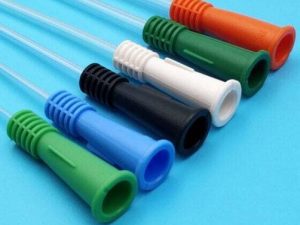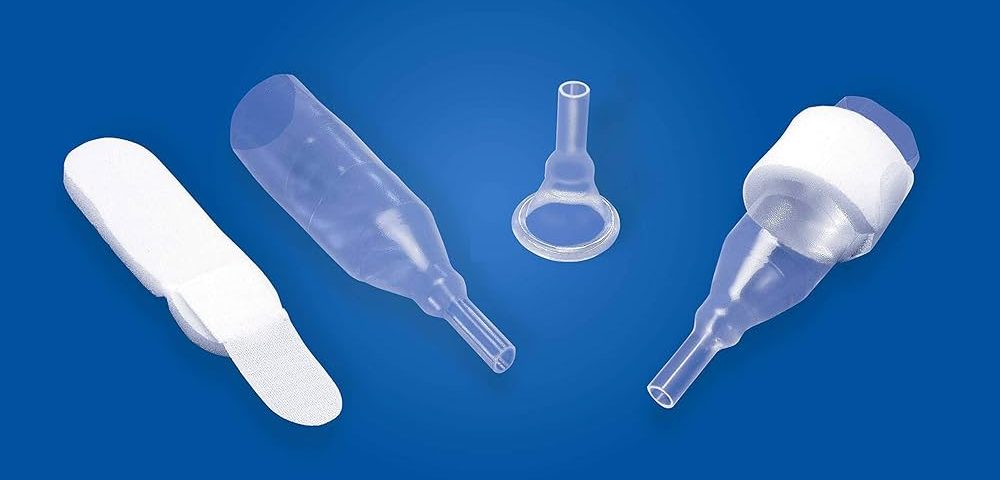
Choosing the Right Urinary Catheter: A Guide for Healthcare Providers
February 2, 2025
Catheter Coverage 2025: Critical Policy Changes and What They Mean for Patients
October 1, 2025If you experience urinary incontinence or retention, your healthcare provider may prescribe a urinary catheter. For first-time users, the thought of catheterization can seem overwhelming — but understanding the different types of male catheters can help ease concerns and make the process less intimidating. Many men rely on male urinary catheters daily, and knowing which type is right for you can improve comfort and safety.
What is a Male Urinary Catheter?
Contents
A male urinary catheter is a medical device used to drain urine from the bladder in people unable to urinate naturally. Sometimes catheters are prescribed temporarily after surgery, while in other cases of chronic disease, they may be required long term. For men with ongoing bladder problems, male catheters are an essential part of effective management.
👉 Browse our catheter supplies for more options.
Types of Male Catheters
1. Indwelling Catheters (Foley Catheters)
Indwelling catheters remain in the bladder for extended use. They include a small balloon inflated once inside the bladder to keep the catheter in place, connected to a leg bag that collects urine.
- Inserted only by a healthcare professional.
- Commonly used after surgery, during serious illness, or for chronic bladder dysfunction.
- Require regular checkups to prevent complications like infection.
2. Intermittent Catheters

Intermittent catheterization involves inserting and removing a catheter multiple times daily to empty the bladder. This method is widely recommended for people with incomplete bladder emptying due to various conditions.
- Must be used with proper hygiene to avoid urinary tract infections (UTIs).
- Patients are often trained to self-catheterize safely.
👉 See our range of intermittent catheters for everyday bladder management.
3. External Catheters
External catheters fit over the penis and collect urine externally. These are usually recommended for men with incontinence who are not in urinary retention.
- Easy to apply and remove.
- Typically painless and more comfortable than indwelling options.
4. Suprapubic Catheters
Inserted directly into the bladder through a small incision in the abdomen, bypassing the urethra.
- Used when urethral catheterization is impossible.
- Requires meticulous care and regular medical checkups.
For more medical context, visit the CDC Catheter Guidelines.
Each option has its own benefits and considerations, but all types of male catheters are designed to make bladder management safer and easier.
How to Choose the Right Male Catheter
Only a healthcare professional can decide which catheter is best for your condition. Factors include:
- Medical diagnosis
- Duration of use
- Risk of infection
- Lifestyle preferences
It’s also important to consider convenience and comfort. Some men may prefer intermittent catheters for greater mobility, while others may require indwelling or suprapubic options for long-term conditions. Your healthcare provider may suggest trying different types until you find the best fit. Proper education on hygiene, insertion techniques, and replacement schedules is key to reducing complications and improving overall quality of life. Selecting the best male catheter depends on your health condition, lifestyle, and how long you’ll need support.
👉 Learn more about specialty options like Coude catheters.
Male Catheter FAQ
How painful is a catheter for a male?
Discomfort varies depending on the type. External catheters are typically painless. Intermittent and Foley catheters may cause mild discomfort during insertion, but lubricants can reduce this.
How is a catheter inserted in a male?
- Intermittent catheters: Inserted through the urethra into the bladder (patient or caregiver can perform).
- Foley catheters: Inserted only by a healthcare professional.
- External catheters: Fitted over the penis like a sheath.
What are the risks of using a catheter?
Improper handling or poor hygiene increases the risk of UTIs and infections. Always follow the manufacturer and provider instructions. For more information, see Mayo Clinic – Urinary Catheters.
How long can a catheter be used for?
- Foley catheters: Must be replaced regularly by professionals.
- Intermittent catheters: Single-use only.
- External catheters: Replaced daily.
👉 For more information, visit our Health Care Providers page.
Choosing and using the right male catheter can make a big difference in your comfort and health. By working closely with your doctor and following recommended care instructions, you can safely manage urinary conditions with confidence. Regular checkups, proper hygiene, and the right product selection will ensure you maintain independence and peace of mind with male catheters that fit your needs.


![IMG_7283[2] IMG_7283[2]](https://www.lnsmedicalsupply.com/wp-content/uploads/2024/08/IMG_72832-660x300.jpeg)